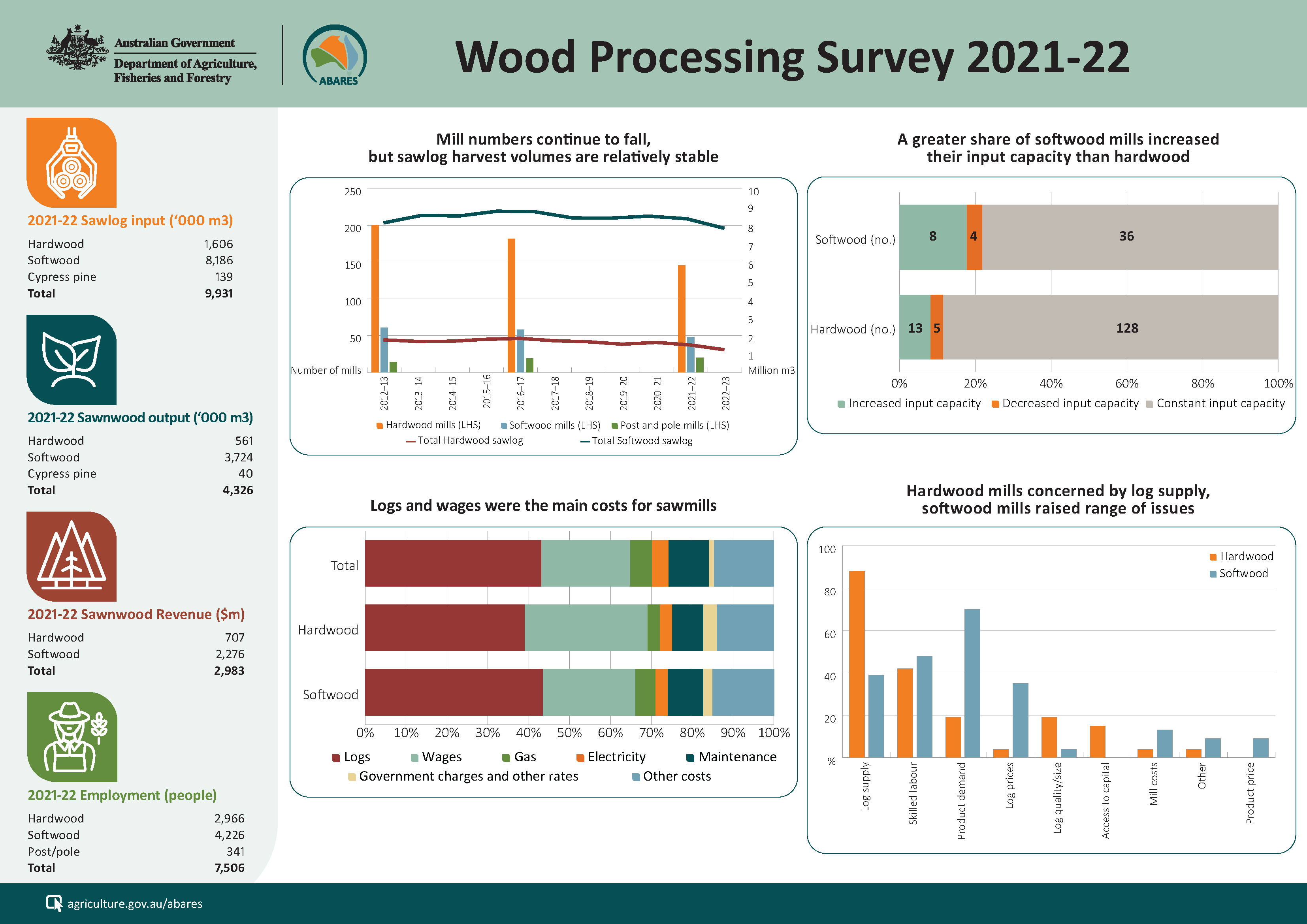Executive Summary
ABARES estimates that a total of 252 mills operated in 2021-22, comprising 146 hardwood sawmills, 48 softwood sawmills, 13 cypress sawmills, 20 post and pole mills and 25 wood-based panel mills. This represents 49 less operational mills since 2016-17, and a continuation of the downward trend in the number of operating sawmills over the last 30 years (Figure 1).
Despite these falls in mill numbers, both hardwood and softwood mill sectors have processed a steady total amount of saw logs over the last decade. This was made possible by 29 mills increasing their input capacity strata.

In 2021-22, compared to 2016-17,
- Total input fell by 7% to 9.9 million cubic meters of sawlogs (including post and pole logs) being processed in Australian sawmills. This comprised of 1.6 million cubic metres of hardwood (down 16%), 8.2 million cubic metres of softwood (down 5%) and 139,000 cubic metres of cypress (down 5%).
- Sawnwood production fell by 8% to 4.3 million cubic metres, comprised of 561,000 cubic metres of hardwood (down 24%), 3.7 million cubic metres of softwood (down 5%), and 40,000 cubic metres of cypress pine (down 30%). An additional 317,000 of hard and softwood posts and poles were also produced.
- 4.4 million cubic metres of residues were also produced, comprising of 616,000 cubic metres of hardwood residues and 3.9 million cubic metres of softwood residues.
- This resulted in recovery rates of 39% for hardwood sawmills, 47% for softwood mills and 79% for post and pole mills.
- Revenue from sawnwood sales increased by 20% to $3.0 billion. This comprised of over $700 million in revenue from hardwood sales (down 24%) and $2.3 billion from softwood and cypress sawnwood sales (up 47%).
- The number of workers employed by sawmills and post and pole mills fell by 7% to 7,506, 85% of whom are classified as full-time workers.
In addition, in 2021-22 it was noted that,
- The largest cost for sawmills was revealed to be logs, followed by wages.
- Respondents lacked a common view on the demand outlook for the next 12 months.
- 88% of hardwood mill respondents raised log supply as an issue, while softwood sawmills raised additional issues including product demand and access to skilled labour.
Download
ABARES National Wood Processing Survey 2021-22 PDF (PDF 1.49 MB)
ABARES National Wood Processing Survey 2021-22 PDF (DOCX 1.8 MB)
If you have difficulty accessing these files, visit web accessibility for assistance.
